It’s hard to not be drawn into the world of high end headphones when you see all the shiny devices, glowing tubes, fancy designs, and wordy analyses. You’ll read a ton of articles and discussions about how a headphone that costs hundreds or even thousands of dollars “sounds like garbage” or how if you don’t listen to music through a certain DAC or Amp your sound quality will be like “nails on a chalkboard.” Perhaps you’ll even get a chance to try out some of these nifty devices, and while you’re intrigued by what you hear, you’re afraid to admit you can’t quite understand how one headphone is considered to have “better dynamics” than another or how one DAC is supposed to “make your music sound 100 times cleaner.”
The reality of high end audio is that it’s a lot like fine wine. The first time you try an expensive bottle of wine, you may not understand why it’s considered to be better than the $15 bottle you get at the grocery store, and you have no idea how anyone is tasting and comprehending this so-called “complex” flavor profile. But as acquired tastes go, if you invest time in going to wine tastings and learning about the aging process, your tastebuds become more sophisticated and perhaps that $15 bottle of wine seems heinous to you now, maybe you can’t even drink it anymore.
Well, your tongue and your ears have more in common than you might realize, and as someone who writes headphone reviews, I often liken the challenge of describing a headphone’s sound to describing a food or drink’s flavor. It’s quite overwhelming when you’re at the beginning of your audio journey and you’re hearing all these do’s and don’ts telling you where to put your hard-earned cash and why. There’s likely some truth to a lot of the advice you’ll receive from seasoned listeners, but they’re not generally truths you need to be concerned with quite yet. While perhaps you have naturally critical ears, it’s likely that, at this starting point, not everything people argue about online is going to be detectable to you quite yet, and therefore is not worth fretting over the way you’re maybe being told to.
I’ve created a list of the basic decisions you’ll have to make when acquiring your first HiFi listening setup, and which things I feel you need to be concerned about when it comes to your innocent ears. Keep in mind, this is just my opinion. I’m not going to go deep into explaining all the technicalities and inner workings of each device or build, you don’t need to be a tech genius to get into audio. This is all about immediately audible sonic differences.
How to Please an Untrained Ear (And Train it Further) – What Should You Really be Concerned About?
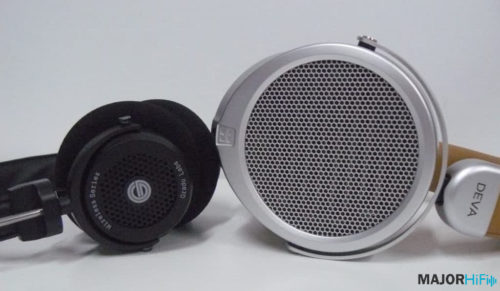
1. Over Ear vs On Ear
Will you Notice a Difference: Yes
Explaining this one’s pretty straightforward: do the headphones sit on top of your ears or do they surround and enclose your ears. The difference in sound and comfort between these two builds is quite big, and most will argue over ears provide a more isolated signal (blocking outside noise) along with having more comfort. Over ears also have the advantage of the chamber created around your ears, which gives the sound and acoustics a lot more room to work with. That being said, on ear headphones can still provide wonderful sound, with brands such as Grado making widely popular on-ears. Additionally, on ears are inherently smaller and more portable than most over-ears. This being said, if you want to maximize your headphones’ sonic abilities, over-ears are the better option in most cases. Not many audiophile headphones are on ear anymore.
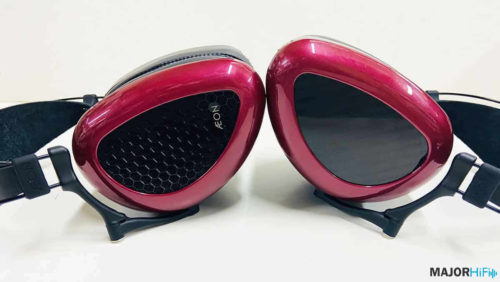
2. Open Back vs Closed Back
Will you Notice a Difference: Yes
This is the next challenge you’ll face when it comes to buying your first pair of headphones. All this talk of open back and closed back, is this just some redundant design element people are hung up on? No, it’s most certainly not. Most, if not all, headphones you’ve owned or used will be closed back. Closed backs keep the sound in the headphones, preventing that noise bleed that makes public commutes and studying in the library painfully awkward. Open back headphones do not make any attempt to keep the noise in, the speaker emits sound into your ears and out the backs of the headphones. This design allows for a much wider, more accurate, spacial sound. It also means anyone around you can hear what you’re listening to, so it’s not always the most practical.
Unlike over ear vs on ear, there’s a large number of both closed and open back headphones available in the HiFi realm. You can absolutely get a wide, spacial sound from a solid pair of closed backs, but open backs will always win the fight in terms of width. If you’re willing to sacrifice the practicality of closed backs, open backs often have a more unique, immersive feel that both new and seasoned audiophile can appreciate. They’re also more optimal for music creation. However, both open and closed backs hold their own, one is not inherently better. Open backs just tend to create the feel of music surrounding your head, which may take newer listeners some time to get adjust to. This is because closed backs tend to keep the music in your head, which you’re probably used to.
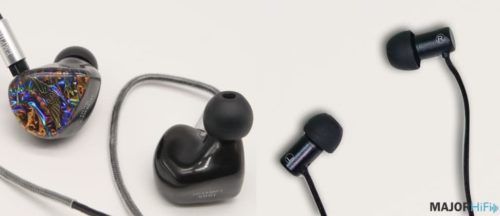
3. IEMs vs Generic Earbuds
Will you Notice a Difference: Yes
You’ve almost definitely owned a pair of earbuds before, as they’re the most popular option these days for affordability, practicality, and portability. As you get into audio, you’ll notice the world of in ear monitors, or IEMs, is growing increasingly close in size to the headphone market. IEMs were originally aimed at live performers or producers, as they offer a snug fit, durable build, and can be found with both highly accurate sound signatures or very particular tunings that prioritize certain frequencies and accommodate specific applications. IEMs can range in price from $40 to $3,500 these days, and you’ll find that few audiophiles use anything resembling an earbud anymore.
What makes most IEMs preferable to earbuds is a couple of things. First, their fit tends to be much more snug and noise isolating, meaning the sound will be further separated from the outside world. Second, they tend to be larger than earbuds and packed full of more complex, newfound technology than most typical earbuds are. This allows even less expensive IEMs to often have a much more precise, professional sound than earbuds. This being said, IEMs also tend to be less generic sounding than your typical bass boosted, extra bright earbuds. Be aware that when you buy an IEM, it’s like going to give your music a bit of a new edge and increased intensity, not just deliver it in a familiar package.
There are still some brands making audiophile quality earbuds, such as Strauss and Wagner.
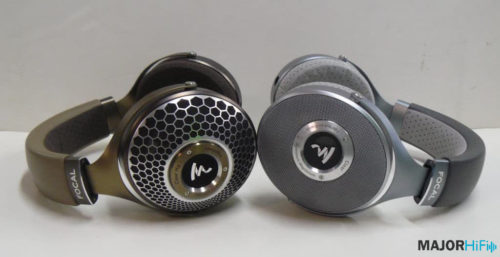
4. Driver Type
Will you Notice a Difference: Not Yet
I’m going to drive (no pun intended) some audio nerds bonkers with this one, but I’ll do it for the sake of saving some of you a ton of time. There are a variety of different drivers to be found in headphones and IEMs, from Dynamic to Balanced Armature to Electrostatic etc. These drivers all have different modes of functioning and do deliver different sonic performances. At some point in your audio journey, you may factor in driver type as a major part of your buying decision. The number of drivers in a pair of headphones and how they’re distributed across the frequency spectrum may also become a consideration. However, don’t let it add to the confusion and stress of your first purchases. The bottom line is that while selecting the right drivers for a given headphone certainly is important to creating a good foundation for its sound, many other factors often take precedent in deciding the overall outcome.
Some will tell you dynamic drivers “have terrible low end response,” or that balanced armature drivers have “way better sound separation and layering.” And that may very well be true to those listeners’ ears, but until your ears have been cursed with this level of pickiness, bask in the luxury of buying a headphone based on basically any other factor. It will take some time and collecting before you can tell the sounds of different drivers apart and figure out your personal opinions and preferences.
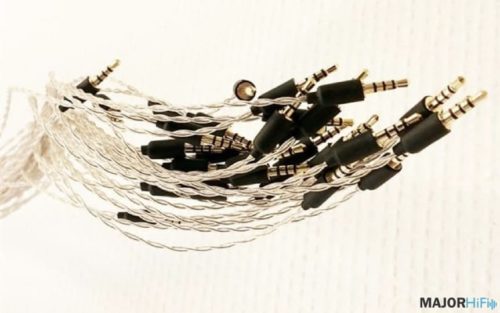
5. Cable Type
Will you Notice a Difference: Not Yet
There’s tons of different cables out there in the audio world, some of which can run well into the hundreds of dollars, crazy, right? Well, yes, but not to everyone. More expensive cables often use higher quality wires, more sturdy building techniques, and provide an overall smoother journey from the audio source to the headphone. Once again, you’ll see a lot of people tell you a certain cable is “horrific” and you absolutely need to replace it. Perhaps one day you will feel a pressing urge to upgrade your headphone cable, but likes are, that day is further in the future. For now, don’t sweat having the perfect cable. As long as it’s long enough and doesn’t tangle too easily, it’ll do the trick. Even if you’re eventually able to hear the difference between different cables, it will always be subtle. Your money is better spent getting the best headphones you can afford right now rather than the second best headphones with the whatever someone alleges to be the #1 most amazing cable.
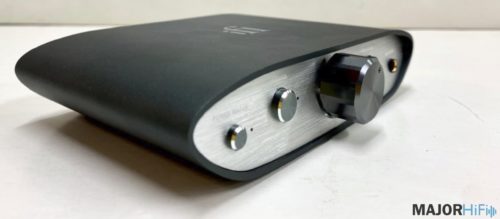
6. DACs
Will you Notice a Difference: Maybe
A digital-to-analogue converter or DAC is what takes the signal from your audio player and converts it into the signal that comes out of your headphones. While all phones and computers have a DAC built in, they’re of course nowhere near the top of the line. DACs may be the most common topic I see getting brought up by beginners on different message boards and comment sections. Someone sees glowing reviews of a certain DAC saying it will give their sound quality a “major upgrade.” So they shell out anywhere from $50 to $1000 or more on this fancy box, and to their horror, they don’t notice all that much of a difference.
The reality is, it is improving the sound quality, and to an extent some people feel is worth whatever price they choose to pay. However, if you’re not very familiar with your headphones or headphones in general, the difference a DAC makes is going to be harder to detect. As your ears become more attuned to the sound of your headphones, having a more subtle change made will be much more apparent, and more likely worth the money. But as you start out, don’t sweat not having the perfect DAC quite yet.

7. Amplifiers and Impedance
Will you Notice a Difference: Yes and No
Headphone amps and impedance are equally confusing in their appeal to DACs, and that’s because their appeal is multifaceted, with one facet being very obvious—volume—and the rest being quite subjective and widely variable between devices. The primary use for an amp is to make your headphones louder—plain and simple. High impedance headphones require more power to get ample volume out of, while low impedance headphones are normally plenty loud without an amp. I don’t usually recommend high impedance headphones to beginners. Start out with a low impedance headphones, that way an amp is optional if you don’t have the money for one immediately.
For high impedance headphones, an amp can be essential to getting proper leveling. But why are there so many different amps out there? How many different ways can loudness be increased, and why are so people using amps with low impedance headphone too? Well, many amps also claim to add some level of coloring to sound or increase in clarity. The quality of this coloring and extent of this clarity varies by price, but this is where things once again become more subtle and personal.
Similar to the quality increase incited by DACs, the coloring or enhancement offered by an Amp is certainly there, but it’s very unlikely to knock your socks off your first go around. DACs and amps are often sold combined in one unit, meaning it’s hard to say what improvement is coming from which mechanism. Some amps do come with sound altercation features like bass boosts and sound widening (check out the iFi xCAN and Zen DAC) that will make much more obvious altercations to sound and could be worth purchasing as a beginner if you want something fun to experiment with and get some variation out of. However, buying a bare-bones Amp for your first pair of headphones is more likely to confuse your ears than it is to excite them. This being said, there’s no harm in getting an affordable DAC/Amp to start out with. Consider checking out the iFi hip-DAC or the Questyle M12.
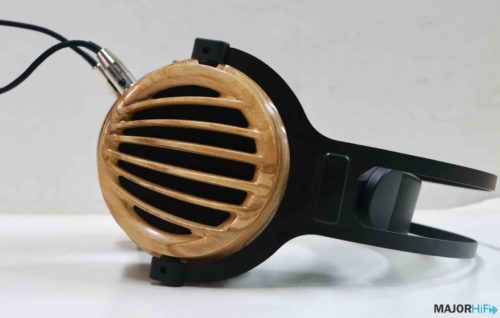
8. Price
Will you Notice a Difference: Sometimes
This is perhaps your biggest question isn’t it. What do all these numbers mean, and what in the world does a $2000 pair of headphones sound like? Price makes an absolute difference, but it works in plateaus. A pair of $200 and $300 headphones may sound equally as good to you, they may even sound just as good as some $500 pairs of headphones. They will likely not sound as good as a $700-$1000 pair of headphones yes, but will they sound $200-$500 worse? Most likely not.
Headphone pricing is an odd thing. While we obviously have more impressive sound technology now than we ever have, there’s still limits to what can be achieved. To get even a slight increase in sound width, realism, or tightness may take a building process or part that is extremely pricey to add to a headphone, and therefore subtle increases in abilities can lead to not-so-subtle price changes. So why do people pay these prices? Because to many audiophiles, every improvement counts, and as your ears become more fine-tuned, how much you value the differences found in each price tier is likely to change drastically.
Price can also be a matter of specificity. You’ll find lower priced headphones tend to follow more familiar sound patterns, whereas some of the higher priced models may have more unique quirks and individualistic characters. If you have a particular taste in sound, perhaps you want an unusually intense attack and booming sub response, it may cost a pretty penny to find a headphone that meets these extremes, especially without sacrificing quality.

9. File Type
Will you Notice a Difference: Not Yet
Ah, another topic that is quick to bring up high tension in the audio community. Yes, that’s right, people get legitimately angry over what other people claim to hear. Perhaps it’s the vacuum of the internet or the defensiveness of expensive purchases, but sound fiends can be quite hot headed about their audio file types. Streaming services like Tidal that offer higher quality audio formats such as FLAC and MQA have kickstarted a wider culture of pickiness among listeners. Spotify and Apple Music are starting to advertise the option for higher-quality file types too.
Now, while you’ll likely notice a clear difference between a 128kbps Youtube to MP3 file and a 1,411kbps WAV file, all it takes is 192 more Kbps to make that gap way smaller. Telling the difference between a standard 320kbps MP3 and high bit rate WAV, FLAC, etc. files is possible, but my word is it difficult. If you’re humble enough to try, do a blindfolded test between the two. Of course you have a 50/50 chance of guessing right, but you’ll find most guesses are a shot in the dark. You may get to a point in your audio journey where the difference is clear, but the truth is far fewer people reach this point than those that claim to. Signing up for Tidal is harmless if you want, and on occasion an MQA or FLAC file does feel an appreciable hair above a typical MP3, but it’s a hair that takes a lot of time to start appreciating. So don’t let anyone tell you that you’re wasting your headphones if you’re not listening to extra fancy, big files.
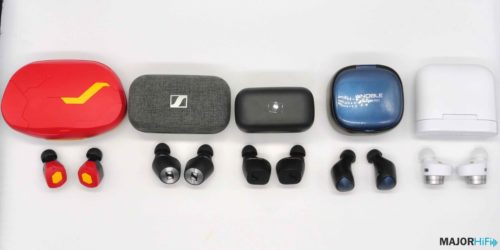
10. Bluetooth vs Wired
Will you Notice a Difference: Yes
Bluetooth has been loathed by large swaths of the audio community for a long time, and only recently has it started to garner more respect as technology progresses. Bluetooth cannot stream audio at as high a quality as a wired headphone can, having to use various codecs to transmit the files wirelessly. This is the primary reason it was disliked by the audio community, as no matter how well made the headphone was, the sound quality would never be up to par with wired. Per my discussion about file types, the difference in quality is not as pronounced as some may say, but it is certainly more noticeable than the difference between MP3 and FLAC, but not by a lot.
The honest truth is you probably won’t usually be able to tell that Bluetooth is slightly degrading your music’s quality until your ears have developed some more expertise. However, what you will without a doubt be able to detect is that bluetooth headphones and earbuds are just not as loud as wired. Especially on quieter recordings, bluetooth headphones often need the volume pushed substantially to get a good level, and having your volume that high is not good for sound quality whatsoever. This being said, it’s not a make or break for everyone. As of recently, bluetooth earbuds like the Bowers & Wilkins PI7, Sennheiser Momentum 2, and Noble Audio Falcon Pro have broken the barrier into parts of the audiophile realm. Some audiophile brands like HifiMan have also been making wireless versions of their headphones that have been relatively well received. They’re all worth checking out, and the added convenience of no wires is major. However, from a purely sound quality standpoint, a pair of bluetooth headphones or earbuds is not likely to become the holy grail of any collection.
So How do I Choose a Headphone?…
So hopefully I’ve helped you narrow down your options a bit, but you’re probably still left with an intimidating list of possibilities. For starters, finding a popular headphone with overwhelmingly positive reviews and a brand with a long-standing reputation makes your chances of enjoying it much better of course. Take for example Sennheiser HD 660s, HifiMan Ananda, or Beyerdynamic DT 1990 Pro, which are all widely hailed audiophile headphones at the moment. This being said, buying a pair of headphones, assuming you’re not able to try them on beforehand, is always a roll of the dice. This is why I’d recommend starting with something in the $150-$300 price range, preferably a more popular model that will more often be used as a means of comparison to other headphones. Some examples could be the Beyerdynamic DT 770 or DT 990 Pro, HifiMan Sundara, or Sennheiser HD560s. For good starter IEMs, considering checking out Final Audio A4000, Meze Rai Solo, or Sennheiser IE 300.
As your ears become more attuned to the sound of your headphones or IEMs, you can begin to look for a pair that has a stronger low end, brighter high end etc. in comparison. Whatever your ears feel is missing from your current pair, another pair has you covered. You can check out Major Hifi’s Headphone, IEM, and True Wireless ranking tools for some general info and comparisons of almost everything on the market right now to help narrow things down too. Best of luck on your newfound passion for audio, here’s to hoping it will take you to new heights and places you’ve never been!
You can purchase all the Headphones, IEMs, Amps, and DACs mentioned in this article at Audio46
MAJORHIFI may receive commissions from retail offers.








